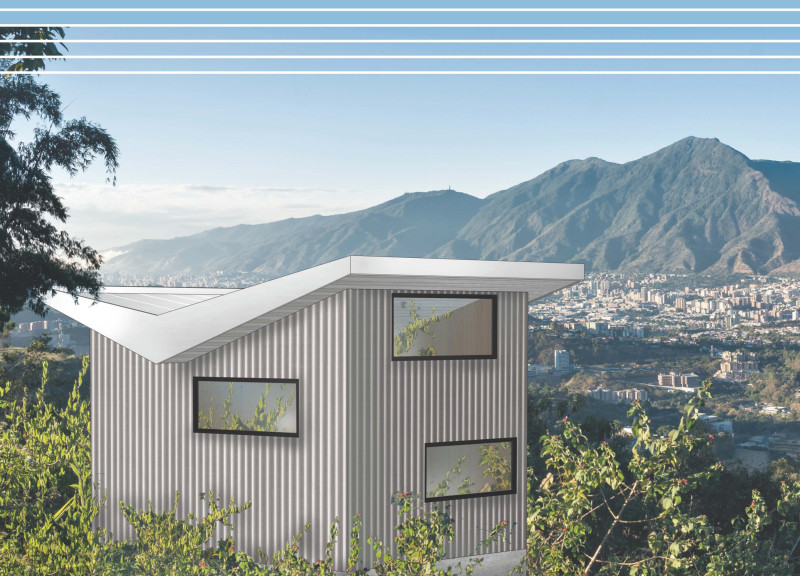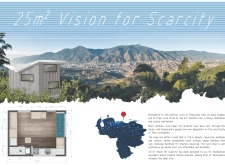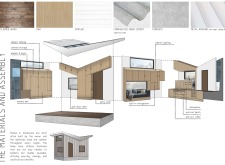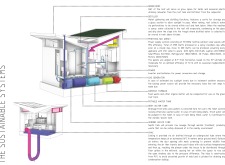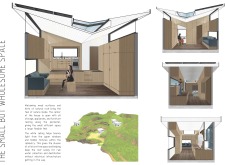5 key facts about this project
The architectural project titled "25 m² Vision for Scarcity" addresses the socio-economic challenges faced in Venezuela by proposing an efficient living solution within a limited footprint of 25 square meters. This design focuses on resilience, sustainability, and adaptability, aiming to provide a functional living space that meets basic needs while integrating innovative architectural strategies. The project represents a response to scarcity, offering practical insights into housing solutions for communities in similar situations.
Unique Aspects of Design and Functionality
The "25 m² Vision for Scarcity" is distinguished by its commitment to environmental sustainability and resourcefulness. The project incorporates a combination of locally available materials, such as reclaimed wood, oak, corrugated fiber cement, and concrete, which align with traditional building practices in Venezuela. This choice not only reduces costs but also fosters community engagement in the construction process.
A flexible interior layout maximizes usability of limited space, featuring furnishings such as a Murphy bed, pull-down desk, and fold-away storage units that enhance multifunctionality. The design optimizes natural light through strategically placed windows, ensuring a livable environment without excessive reliance on electrical lighting. Furthermore, the incorporation of systems like a green roof for rainwater collection and solar panels for energy generation reinforces the project’s sustainability goals, providing autonomy in energy and water management.
Innovative Approaches to Sustainability
Sustainability is a key focus in the "25 m² Vision for Scarcity." The project integrates several systems aimed at promoting self-sufficiency. The green roof not only contributes to water management but also allows residents to cultivate gardens, connecting inhabitants to their environment. The photovoltaic array serves dual purposes by supplying electricity and enabling the structure to remain functional despite unreliable external power sources.
Additionally, the architecture employs a natural ventilation strategy that enhances thermal comfort while minimizing energy consumption. This approach underscores the project's overarching goal of resilience in housing, promoting a lifestyle that maximizes resource efficiency amidst economic constraints.
For those interested in exploring this project further, reviewing the architectural plans, sections, and designs will provide a comprehensive understanding of the innovative ideas that inform its execution. Understanding the architectural details of the "25 m² Vision for Scarcity" can offer valuable insights into effective housing solutions for contemporary challenges.


